Mezut Özil: a in-depth look at his game
The name on everyone’s lips over the first few weeks of the World Cup tournament was Mezut Özil. His clever movement and fantastic touch was a delight to see, providing an opportunity to glimpse into how young players should think about the game. Özil’s performances in the group games and then against England gained him many plaudits, unfortunately for him these top-quality performances were not replicated in the semi-final against Spain, where he was largely anonymous. However, his early star showings were deeply impressive and offered a look at the type of players more countries should be producing.
Although he played ‘in the hole’ for Germany this World Cup, in the under 21 World Cup final last summer he played as an auxiliary left-winger, as he does sometimes under Thomas Schaaf at his club Werder Bremen. In the 4-0 win against England in the final of 2009, he produced a fantastic performance on the left-wing, the same characteristics and attributes were just as expertly displayed as in 2010.
He received rave reviews from the Telegraph, with “England boasting nobody of the same class of Özil” with the English No. 10 equivalent receiving a run-around. The most damning aspect of the report was that Mark Noble received typically English player praise of being ‘an honest, hard-working pro’, which is similar praise also given to Robbie Savage. Ouch.
From the position on the left, he drifted infield, finding space in the same way he did in the World Cup. Regardless of what position he’s playing the Gelsenkirchen-born midfielder’s ability to find space off the ball is one of his main strengths.
Here, he has drifted into the space between midfield and defence, giving Sebastian Boesnich, his Werder Bremen teammate space to push forward, keeping the width. What’s special with Özil is his reading of the game, he notices the defence are deep and midfield have pressed the German midfielders. This is a pristine opportunity for Özil to get time and space to turn and run at defences, something he loves to do.
Not afraid to run at players and take them on, he’s able to bring defenders out of position, moving the ball past them and exploiting the space left by their movement to meet Özil. Unlike Theo Walcott, who goes past players by moving the ball past players and running on to it, he skips past players due to his quick feet, which allow him to have a great feel for the ball and from this, able to execute subtle, acute passes.
With twenty minutes gone, England were controlling the game, Germany were happy to sit back. With one quick counter-attack, Germany were one-nil and the goal was all down to Özil. The goal again was a carbon copy of the movement showed in the screenshots above.
With Fabrice Muamba closing down Fabian Johnson, Özil finds the most dangerous space on the pitch again. Özil always looks to run directly and to the weaker areas of the defence, looking to get a one-on-one with a stray defender and mostly looks to pass. Noticing the gap between right-full back and central defender, he runs at Richards to bring him out of position (1). Castro, the goalscorer runs around the outside of Martin Cranie hoping for a ball through the gap left by Richards (2) – Özil manages to slip the ball through the tiniest of gaps for Castro to run onto and slip past the on-rushing Scott Loach (3).
His reading of the game from his first position is intelligent, noticing that Wagner, the centre-forward is occuping the right sided centre-back position. If Wagner is clever, he’ll try and produce space between the centre-backs so the centre-back will find it hard to cover if Richards moves out of position. He does this will enough, allowing Özil the space to pass between Richards and Cranie whilst Onuoha is unable to intercept the pass.
For the third goal, Özil wins the ball on the half-way line, runs directly at the English defence as Wagner peels off to the left. Afraid to leave a gap for Özil to run into, the defence just wait, wait, wait and wait keeping their position. Eventually they’re on their 18 yard line and move forward, as they look to step-up, Özil calmy passes the ball for Wagner to slot past Scott Loach. Özil didn’t show anything special in the run or the dribbling, but his knowledge of when to pass the ball is outstanding, always getting the timing right. In this instance, with the defence stepping up, they were momentarily in no-man’s land and on the front-foot, not in a position to defend a ball behind. Özil’s composure on the ball and patience with the final pass is something that seperates him from young attacking midfielders.
His understanding of the game on the left-side of midfield is exemplary, he performs equally as well as he does in the position he played in the World Cup for Germany. Now I’ll examine his performance against Freiburg for Werder Bremen which left Rafael Honigstein proclaiming that he is ‘the best player in the league, a one-man source of creativity’.
In this match, he played behind the Portguese striker Hugo Almeida and Germany youngster Marko Marin and finished the match with a goal to his name, as well as four assists. In this game they played with a narrow diamond in midfield, which didn’t help Özil’s natural game of looking for pockets of space. The Freiburg defence were able to move as a unit and stay compact, restricting the space available for Bremen to work with.
Nevertheless, his ability to observe a game and plan what is going to happen seconds before it happens was remarkable.
From a poor corner, a clearance is sent towards the half-way line. As the ball is cleared, Özil, instead of chasing it back, as he is the nearest man to it, stops, looks and watches two right-sided Freiburg players chase the ball (1). This may sound simple but the ability to watch a small passage of play and stop natural inclinations to chase the ball back and move forward into the space inevitably left by the defence is notable (2).
Here, he does his turn on a 20 cent Euro piece and runs directly towards the goal and has a shot that just goes wide. Previous to this chance he had already drifted in between the full-back and centre-back to hit the post from a cross from the by-line. It’s just worthy to note that the majority of players would have chased the ball back given he was the closer than his teammate, but he stopped, waited to see what might happen and took a risk – and it nearly paid off.
As shown in the World Cup, he’s unafraid to break through and run beyond the defensive line. For the first goal, as the left-back gets the ball he immediately looks for a run between the centre-back and full-back. He gets to the ball just on the bye-line and with his first touch crosses it on the half-volley for Huge Almeida to head home. Physically, he’s like a whippet, he’s very lean and he has great balance. It’s not just his reading of the game that stands out, his physical attributes complement his game well.
This allows him to drift wide and perform well on the wings – especially during a counter-attack. He looks to find space immediately and look to get the ball to his feet. For the second goal, he received the ball from a throw from goalkeeper Tim Wiese. Seconds earlier, Freiburg has a good chance to score and now 5 seconds later Özil has the ball at his feet and is able to start a counter-attack.
Added to his physical attributes is his ability to finish when the opportunity comes. For his goal in the game, he breaks through the awful Freiburg defence (an easy task) resisting temptation to blast it towards goal when the goalkeeper comes out. He just calmly moves the ball wide and passes it into the net, impressive given the tight angle shown to him and the defender covering.
For the final goal of the game, he shows that as well as demonstrating his pace, his movement, his reading of the game and his finishing, Özil can also cross. By playing in a position that allows him to roam around the pitch where he sees fit, he finds himself playing out-wide often. This makes him extremely fluid and versatile, able to play in wide-positions and not just sticking to the middle of the pitch.
The goal comes from Özil’s movement to the wing, which as Rafael Honigstein pointed out, gave Werder Bremen much needed width time to time. He had already shown the Freiburg defence that they don’t want to leave gaps between their full-backs and centre-backs otherwise he’ll run between them. By keeping a narrow defence, it gives Özil plenty of time when he’s wide to pick the right type of cross.
Özil chooses to pass along the ground around the back of the rushing full-back for Rosenborg to score with ease. This demonstrates his sensible decision-making that many wide-players lack (case in point: Theo Walcott).
What makes Özil hard to play against is his movement and reading of the game, he flows between centre-backs and full-backs, dropping deep and then running from deep to space behind the defence. When defences are narrow, he moves wide and is able to cross sensibly. His understanding of what to do during certain periods of the game is remarkable for his age, he tactically knows what to do given the opposition’s pitch position. His running at defences is educated, he looks to bring players out of position, singling out weak links in the defence and then his great touch allows him to produce a measured pass to teammates to usually score. He reacts to the opposition, looking to exploit weaknesses throughout the match, for a young player he has a very measured head on him.
What was shown against Spain is that he struggles if the opposition play a high pressing game with one player always looking to close him down. In this match, he struggled to find the pockets of space that he usually occupies and his influence was minimal. Nevertheless, the performances he has put in over the past year shows what a quality player he really is and is sure to become a top talent on the World Footballing stage.
As an aside, watching England in the U21 final demonstrated the problems English football will face in the future. Instead of patiently trying to build a move, through passing and movement, they were far too eager to play a ‘hollywood’ ball looking for a quick burst of pace down the channels. Germany were a lot more composed in midfield, building triangles and supporting wide play through supporting central midfielders – not looking for a cross-field defence splitting pass that was often unsuccessful. It just confirms some of the things I said in this post.


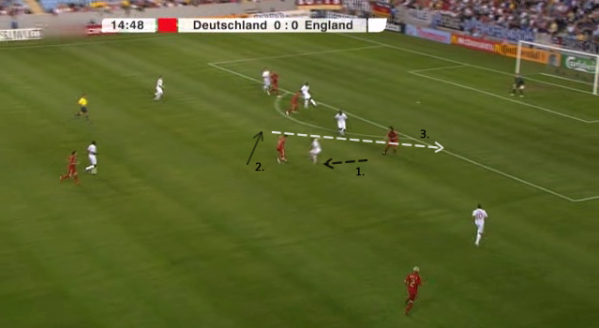

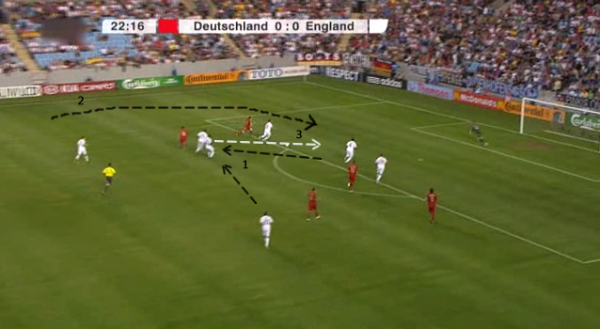

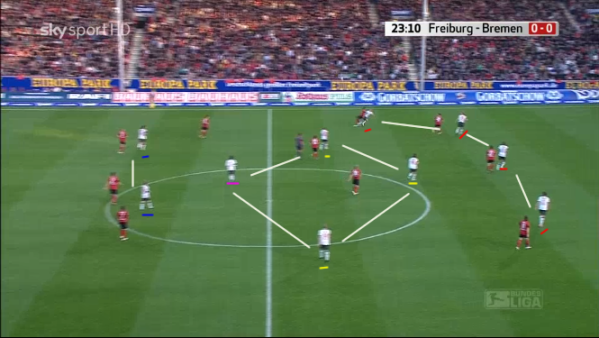


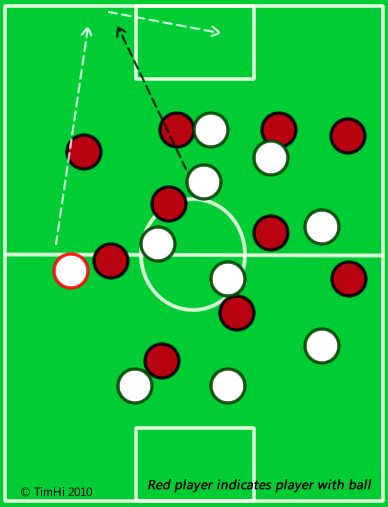


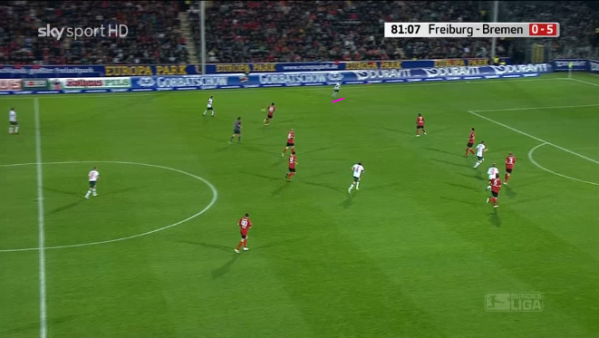


I like Germany but, unfortunately they only got third place. What a bad rank for a team like Germany. They should in the 1st place.
good article
Brilliant analysis, enjoyed reading it a lot
Excellent article Tim! Ozil is a very mobile player so though he is creative and apt at finding spaces, it would be hard to call him an attacking midfield or even a winger